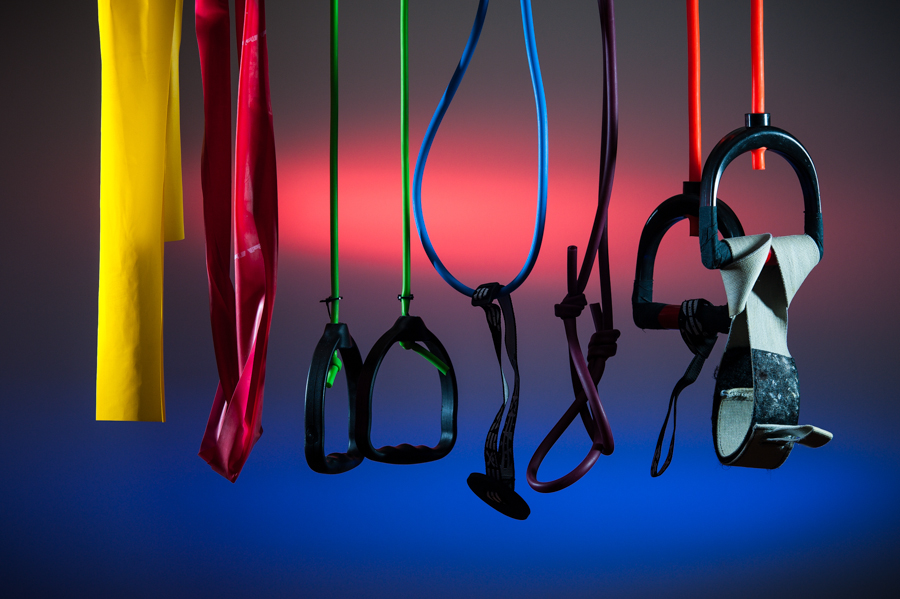Exercise is important for everyone but even more so for we quadriplegics. Keeping our arms and shoulders strong as long as we can, to maximize and prolong our independence, is not just for our physical health but our mental health, as well. The question is, outside of rehabilitation centers, when was the last time you saw a fully wheelchair accessible gym? That is, with cuffs and quadriplegic-friendly handles on the weight machines, not just machines that can be wheeled up to.
Downstairs, collecting dust, is a weighted pulley system with the adjustability (much of which I cannot adjust independently) to perform a small variety of motions to work different muscles and muscle groups. It is not too large and cumbersome but enough so that it does not have a dedicated place in our home to be mounted to the wall. There are a few locations that it could be placed but they are tucked away in most uninviting and unmotivating locations. Therein lies one of the largest obstacles to regular exercise for many individuals, disabled or not, which includes myself. Lack of motivation.
A good friend and I make regular visits to one of the city's indoor facilities which, after a lengthy process of cutting through red tape and persistence in communicating with the right individuals, has a fully accessible workout machine. Unfortunately, it's is in a cramped room with a number of other workout machines used by many individuals who do not understand the importance of not blocking the accessible machine with cooldown mats, chairs and other clutter that prevent us from using it. Add to that the missing handles, pins or other disrepair and what could be a very effective machine has become more of a hassle than a help.
As a result you will find us most mornings wheeling on the track and allocating time to use the therabands in the picture above. Those therabands are lightweight, easy to transport, made to fit our needs and can be used anywhere. It is in front of a TV or near a stereo that I find it easier to grab the therabands and work with them while watching or listening to something, rather than tucked away by myself in the basement where the weights and pulleys would be.
From left to right you have theraband ribbons and theraband tubing, increasing in resistance from left to right. This particular ribbon is latex, unfortunately. The endless white powder that comes off of them is a significant irritant, even an allergy, to a lot of people. I am unaware of non-latex theraband ribbon, which is unfortunate because ribbon is much easier to carry than the tubing. The handles accompanying the green theraband tubing are nicely adjustable to allow any length between them which makes them suitable for the widest variety of exercises. The disc and strap attachment on the slightly stronger blue tubing is designed to be slid behind a door before closing it to provide an anchor point for the tubing. This provides a solid, adjustable, place to pull from without the fear of damaging a lever door handle or other makeshift anchor point. We often slide this between the wooden slats of the benches surrounding the track where we wheel.
Simple loops tied in the end of the purple theraband tubing allow a place to grasp, or wrap around the wrist, to get the right length for various exercises. My strongest theraband tubing came with handles that had a red plastic tube that rolled as you used it. For someone who cannot grasp the rolling part it was a 50 pound slingshot waiting to hit someone when it fired out of my hand. Consequently it was secured with hockey tape and had other wrist straps added to the handles to give a secure place from which to pull. The gray strap was originally one that I had used to secure my legs together and assist in getting them pulled onto the bed when I was still rebuilding my strength, post injury. As with my razor cuff, it was made by an amazing fabricator that worked at the rehab facility I was at. Thank you, again, Beulah.
In addition to the therabands, sitting next to my computer are dumbbells that incorporate Velcro straps. Unfortunately they only go up to 5 pounds and are difficult to double up on one hand or arm comfortably. Even at 5 pounds they often cut into a person's hand when being used. That may be why they are only available with Velcro up to that weight. I imagine if I thought about it and work with some paracord I could come up with a helpful handle for the 15 pound dumbbell in the back, but the fear of dropping it and damaging the floor or hurting myself is greater than the payoff. Thankfully the therabands can very easily be doubled up or stacked to add as little or as much additional resistance as you would like as your strength grows.
Not pictured are the pair of 1.5 pound wrist weights that can be Velcroed on to either the dumbbell or a person's wrist to add that little bit of extra weight. Unfortunately, with our arms being as skinny as they are and no longer tapered, typically the wrist weights slide up and down the arm as you raise and lower it to perform the exercise. Currently one of them is employed as a counterweight for the opposite end of my boom arm used in making many of the photos you see on this site.
Source: Dumbbells - Department and sporting goods stores.
Therabands - Occupational and physiotherapists and online retailers. Bodylastics is where we got our last batch from.


No comments:
Post a Comment